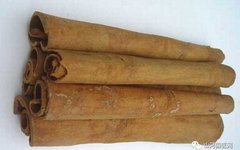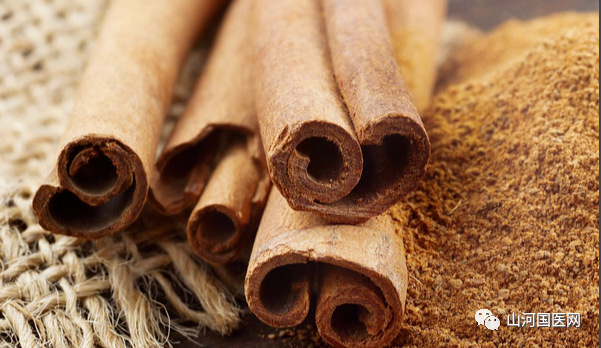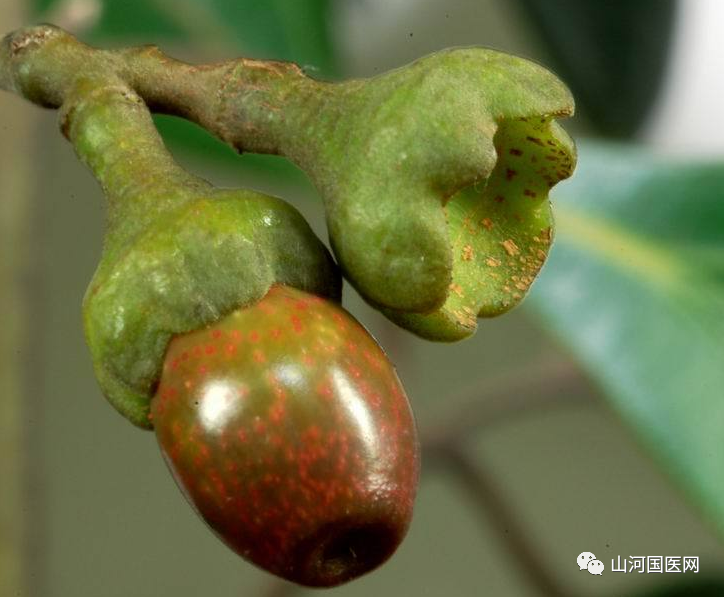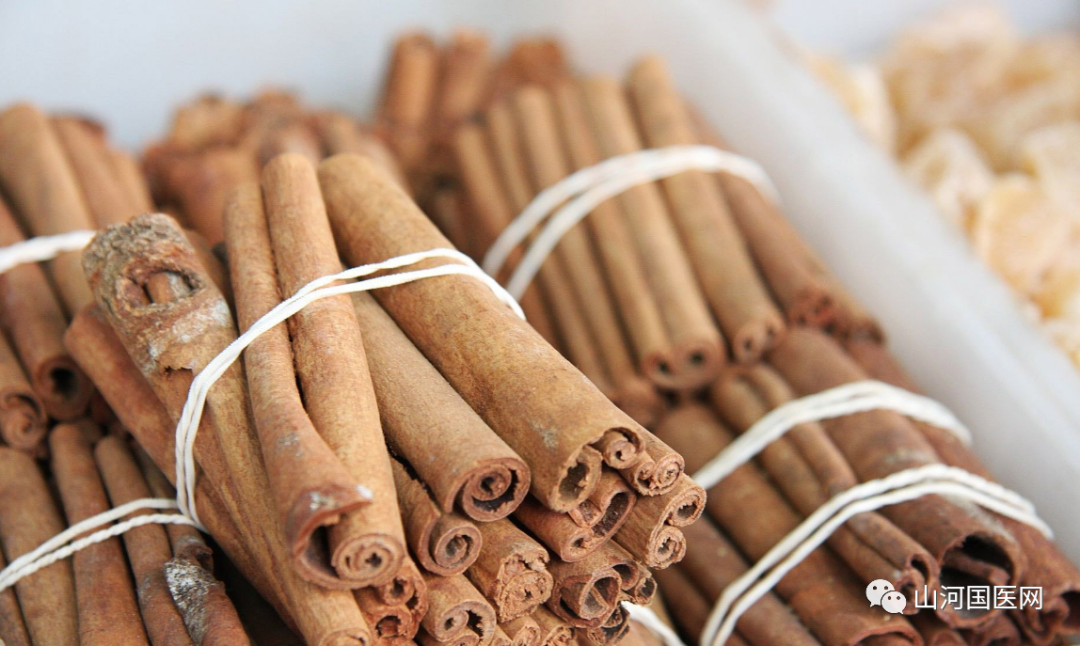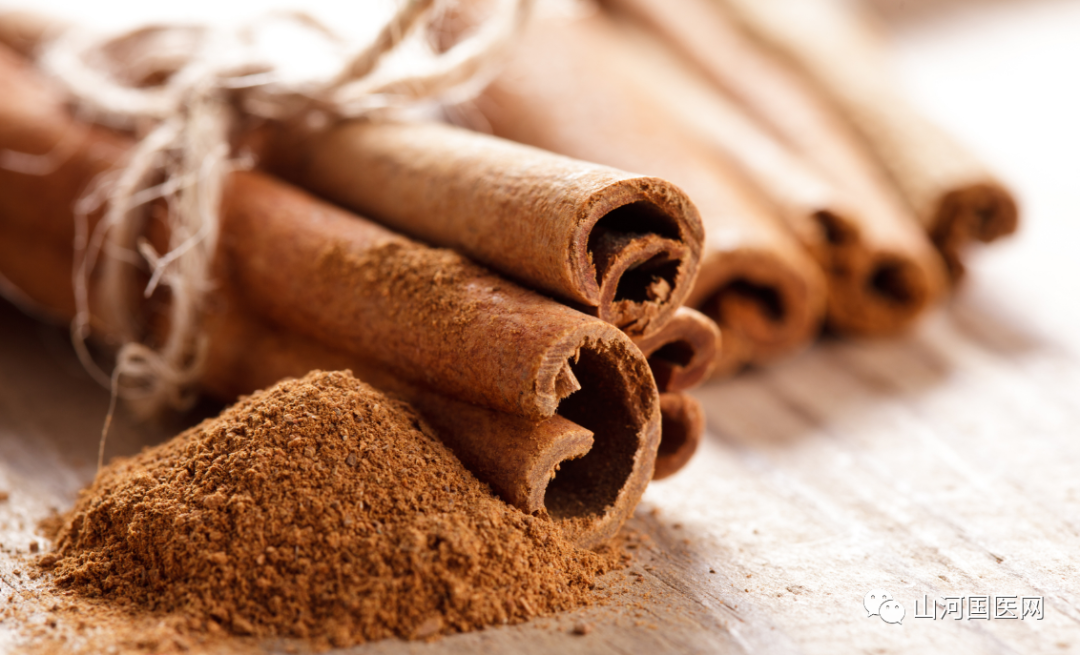| 肉桂Ròu Guì | |
|---|---|
|
|
|
| Aliases | Mu Gui, Zi Gui, Da Gui, La Gui, Gui Pi, Yu Gui, Jun Gui, Gui, Tong Gui |
| Functions | 补元阳 (Tonifies Yang), 暖脾胃 (Warms the Spleen and Stomach), 除积冷 (Eliminates Accumulated Cold), 通血脉 (Unblocks Blood Vessels). Treats 命门火衰 (Kidney Yang Deficiency), 肢冷脉微 (Cold Limbs and Weak Pulse), 亡阳虚脱 (Yang Collapse), 腹痛泄泻 (Abdominal Pain and Diarrhea), 寒疝奔豚 (Cold Hernia), 腰膝冷痛 (Cold Pain in the Lower Back and Knees), 经闭症瘕 (Menstrual Disorders), 阴疽 (Yin Abscess), 流注 (Wind-Damp Bi Syndrome), and 虚阳浮越 (Floating Yang). |
| English Name | CORTEX CINNAMOMI |
| First Recorded In | 《唐本草》 (Tang Bencao) |
| Toxicity | Has toxicity (some say non-toxic) |
| Meridians Entered | Heart, Spleen, Liver, Kidney |
| Nature | Hot |
| Taste | Pungent, Sweet |
Pinyin Ròu GuìAliases Mu Gui (《本经》), Zi Gui (《药性论》), Da Gui (《唐本草》), La Gui (《仁斋直指方》), Gui Pi (《本草述》), Yu Gui (《本草求原》).Source The dried bark and branch bark of the plant 肉桂 (Ròu Guì).Generally harvested from August to October, the bark is stripped from the tree at a certain width and processed into various specifications, mainly including:① Official Cinnamon: Bark from cultivated young trees aged 5-6 years, dried in the sun for 1-2 days, rolled into cylindrical shapes, and dried in the shade.② Qibian Cinnamon: Bark from trees over ten years old, trimmed at both ends, and dried between wooden boards.③ Board Cinnamon: Bark from old cinnamon trees, cut in a ring at 30 cm above the ground, peeled off, and dried until 90% dry, then stacked and pressed for about a month until completely dry.As for

